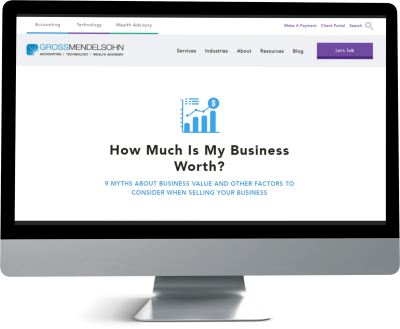One challenge manufacturing businesses face year in and year out is taxes. Even with a good CPA working alongside them, no business owner looks forward to dealing with taxes, let alone paying a tax bill. The good news? There are tax breaks specifically designed for manufacturers to help lower your tax liability.
We’re here to tell you about two tax credits and two tax exemptions that every manufacturer should know about. Before we dissect each one, let’s define tax credits and tax exemptions.
A tax credit is cash used to offset a tax liability.
A tax exemption reduces or entirely eliminates your obligation to pay tax.
Tax Credits for Manufacturers
Manufacturers can take advantage of two key tax credits: one is the employee retention credit, and the other is the research and development tax credit.
Employee Retention Credit (ERC)
What is it?
The employee retention credit is a refundable payroll tax credit stemming from the CARES Act of 2020. The credit is available for employers meeting the following criteria:
-
Full or partial closure due to a government order
-
For tax year 2020, gross sales of any quarter in 2020 are less than 50% of the same quarter in 2019
-
For tax year 2021, gross sales of any quarter in 2021 are less than 80% of the same quarter in 2019 (also phrased as a 20% decline in gross sales)
Why you should care
For tax year 2020, an employer can receive a credit of up to 50% of each employee’s first $10,000 in qualified wages, up to $5,000 for the year.
For tax year 2021, an employer can receive a credit of up to 70% of each employee’s qualified wages, up to $7,000 per quarter per employee, or up to $28,000 for the year.
Research and Development Tax Credit (R&D)
What is it?
The R&D tax credit originated in the 1980s when former President Ronald Reagan encouraged innovation through the use of tax credits.
The R&D credit is available to companies developing new or improved business components including products, processes, software, formulas or inventions that result in new or improved functionality, performance, reliability or quality. The tax credit is available at the federal level and most states, including Maryland.
The tax credit is calculated based on the increase of qualified research expenditures (QREs) over a base period. QREs include wages, supplies and a percentage of any contractor costs incurred to perform the research.
Why you should care
The R&D credit is calculated on the federal income tax return and is generally allowed as a credit against income taxes. If you do not have income taxes during the year in which you incur R&D expenses, there is an opportunity to offset these expenses against FICA payroll taxes.
How much can you qualify for?
The R&D credit is generally unlimited to the amount of income tax but it is limited to $250,000 when being applied to reduce payroll taxes. If not completely used against income taxes the R&D credit can currently be carried forward for 20 years.
Tax Exemptions for Manufacturers
Sales & Use Tax Exemption
What is it?
The sales and use tax exemption allows manufacturers to purchase physical property that is used in the manufacturing process without incurring Maryland’s 6% sales and use tax.
This exemption applies to raw materials and supplies, capital equipment and even utilities (electric and gas) if used in the manufacturing process.
There are certain criteria required for the purchases to qualify. The property must be integral, essential and used in over 50% of the manufacturing process.
No forms are needed to claim this exemption other than one required for utilities and fuel purchases.
Why you should care
This exemption was designed to save you money now and in the future. If you are paying a 6% sales tax on raw materials and supplies, capital equipment and utilities that are used in the manufacturing process, you may be eligible for a sales tax refund.
Personal Property Tax Exemption
What is it?
All businesses must file a personal property tax return, also known as an annual report. These tax returns are used by local jurisdictions to determine the extent of personal property used by the business subject to tax. Examples of personal property include furniture and fixtures, computer equipment and other machinery and equipment.
Manufacturers can apply for an exemption, making them exempt from paying personal property tax on property used in the manufacturing process.
Why you should care
Similar to the sales and use tax exemption, this exemption was designed to save you money now and in the future. With tax rates generally around 2% and as high as almost 6%, depending on the jurisdiction, this could lead to substantial savings for manufacturers.
Need Help?
There are several considerations that need to be accounted for when applying for these credits and exemptions. If you have questions about how to take advantage of these tax credits and exemptions, or how to apply for them, we can help. Contact us online or call 800.899.4623.


